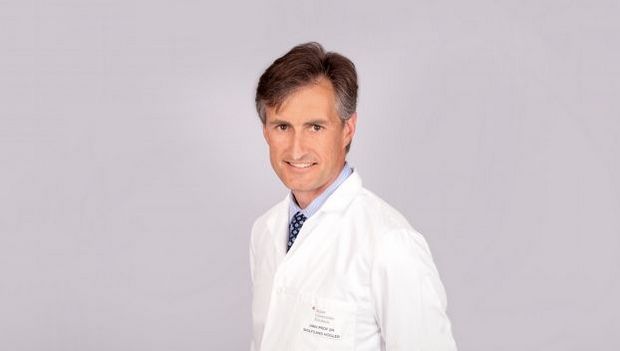When it comes to "rare diseases", University Medicine provides answers and hope.

Brittle: Ranging from mild to severe, patients suffering from brittle bone disease can fracture their bones easily. The worst form of the disease is when the fetus suffers from the condition in the womb.
Even four months before she was born, doctors discovered that little Naomi suffers from the disease. During an ultrasound as part of a routine gynecological examination, they discovered her femur was too short. Univ. Prof. Wolfgang Högler at the Johannes Kepler University Linz diagnosed "osteogenesis imperfecta", also known as brittle bone disease. An early diagnosis meant that doctors could actually begin treating the congenital skeletal development disorder immediately after she was born.
Why the Bones Break
The professor at the Kepler University Hospital (KUK) Linz remarked: "It is a genetic defect that results in not being able to form enough bone mass. The bones are soft and brittle, and break easily, sometimes not even as the result of a fall or anything." According to Högler, the collagen is missing. Collagen not only ensures that the bone’s mineral components are well embedded, but also that there is a degree of elasticity.
At its worst, this type of osteoporosis can be life-threatening and so severe that some babies are stillbirths, or it is fatal during the first year of life. Milder forms of the disease are sometimes not discovered until adulthood. In addition to multiple fractures, short stature and muscle weakness characteristically occur. The head of the Department of Pediatrics and Adolescent Medicine added: "Vertebral body fractures can also cause back pain."
As brittle bone disease is rare - affecting only one in 15,000 newborns - it often goes undetected and is treated late. Högler stated: "Parents and colleagues need to understand that children and adults suffering from this rare disease need the expertise found only at a teaching hospital. These families have to travel quite a bit." The Department of Pediatrics and Adolescent Medicine has 22 special outpatient clinics for rare diseases where young patients and their families can be treated by doctors, as well as by psychologists, physiotherapists, and occupational therapists (see the info box on the right to learn more).
Infusions Can Strengthen Bone Structure
One treatment focuses on special infusions to help strengthen the bones and reinforce the skeletal frame, resulting in fewer fractures. The specialist commented: "We want to look far ahead into the future: A child’s bones grow constantly - every day – and the treatment can help the bones become stronger. Unlike adults, and if treated early, children can often experience very good results. As opposed to adults, our treatment can even rebuild vertebral fractures."
In just two weeks, Naomi will celebrate her eighth birthday at home in Seewalchen and these improved treatments have resulted in a higher quality of life. Naomi’s father, Adrian Viman, is grateful: "The top-notch treatment at KUK has been amazing and we were also part of a study. We can tell how well the infusions have helped Naomi."











